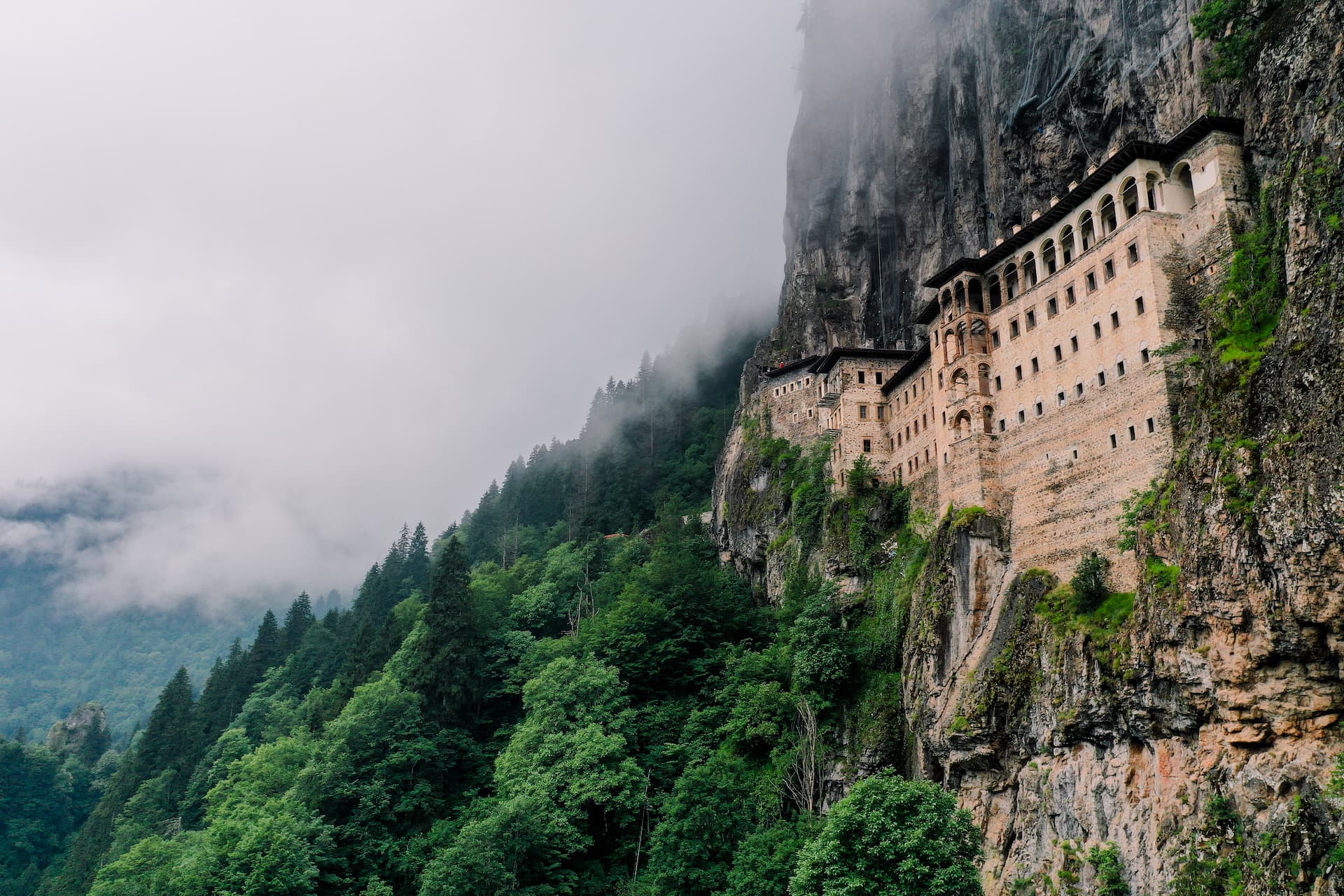
It is said that the monastery, which was established in the name of the Virgin Mary, is named after the word “black”, which means “black”. Although this name is thought to come from the dark Montenegro in which the monastery was established, the word Sumela can be connected to the black color of the Mary depiction here.
According to the rumor; The monastery, which was founded by two priests named Barnabas and Sophranios from Athens during the reign of the Byzantine Emperor Theodosius I (375-395), was repaired by Belisarios when Emperor Justinianus asked the monastery to be repaired and expanded in the 6th century.
It is known that the Sumela Monastery has continued its existence from the 13th century with its current situation. The importance of the monastery increased during the time of the Trabzon Komnenos Principality, which was established in 1204, increased the importance of the monastery during the reign of Alexios (1349-1390). The son of Alexios III.
Following the entry of the Eastern Black Sea coast under Turkish sovereignty, the Ottoman sultans protected the rights of Sumela as in many monastery and gave some privileges.
Many parts of the Sumela Monastery were renovated in the 18th century and some walls were decorated with frescoes. With the addition of large buildings in the 19th century, the monastery gained a magnificent appearance and experienced its richest and bright period. In this period, the monastery, which took its final form, has become a place subject to its writings, visited by many foreign travelers. During the Russian occupation of Trabzon between 1916-1918, the monastery was confiscated and it was completely evacuated after 1923.
The main parts of the Sumela Monastery are; The main rock church is a few chapels, kitchens, student rooms, guests, library and holy Ayazma. These structures were built on a very large area. The large water belt, which is understood to bring water at the entrance of the monastery, is leaning on the hillside. Most of this belt, which is multi -eyed, has been destroyed today.
The main entrance of the monastery is reached with a narrow long staircase. Next to the entrance door, there are guard rooms. From here, the inner courtyard is descended by a staircase. On the left, there are various monastery buildings in front of the cave, which constitutes the basis of the monastery and turned into a church. The library is located on the right. Again on the right, the large balcony section covering the front of the slope was used as monks and guest rooms and dated to 1860. In the buildings around the courtyard, the cabinets, cells, quarries in the rooms and the effects of Turkish art are also seen.
The inner and outer walls of the rock church that forms the main unit of the monastery and the adjacent chapel adjacent to it are equipped with frescoes. In the rock church, the wall overlooking the courtyard III. The presence of frescoes of the Alexios period were determined. The frescoes in the chapel are dated to the beginning of the 18th century and three layers made in three periods are seen. The frescoes of the bottom layer are superior.
The main issues taken in the frescoes taken from time to time in the Sumela Monastery and carry a very ruined appearance of the scenes taken from the Bible, Hz. They are depictions about the life of Jesus and the Virgin Mary.